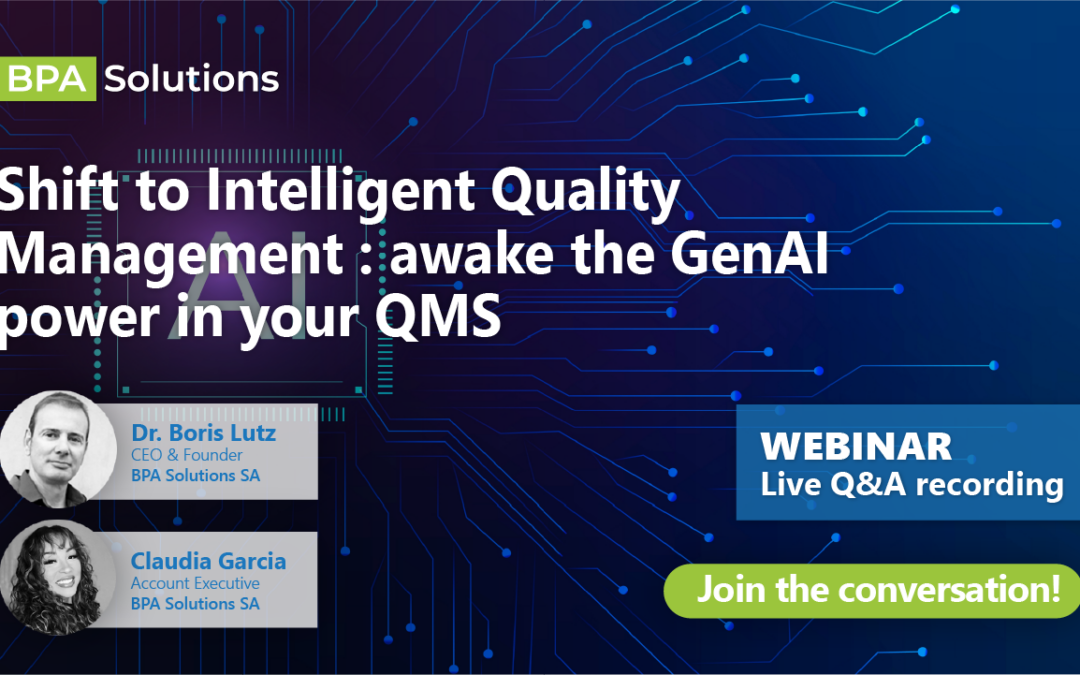In this article we will highlight benefits of digital collaborative QMS for a typical problem solving process.
How does a typical problem solving process look like for most organizations?
Considering the 8D methodology we have following steps for a typical problem solving process:

What are typical risks for this process?
An Excel spreadsheet is certainly not a good way to register problems because one person at the time can modify the file. A form solution allows internal or external stakeholders to register a problem. This avoids the quality manager to register problems for everyone in the organization and make the system participative.
How can you link emails, documents, corrective actions, risks and activities with the problem? Spreadsheets and typical database systems are not adequate to handle related data and documents with a problem. Typical spreadsheets and database systems are disconnected and you will miss the overall picture. The ideal system should display a 360 degree view of a problem with all related information coming from different sources, like emails, tasks, calendar, documents or others.
How to make sure the right persons are alerted during the problem solving process? With a traditional paper or database system, each end user has to manually alert the right persons throughout the process. Obviously it is a risky process, it’s also time consuming and usually not efficient. With a digital collaborative system, workflows and automatic alerts will make sure the right people are alerted. Workflows enforce that corrective actions are efficient prior closing any QMS process. Also, workflows will shorten any process’ lifecycle.
What about reporting? With a paper system, reporting is a time-consuming manual work. With a digital system, you can view instant reports or export any data into a spreadsheet for advanced reporting. No manual work is needed anymore.
What are the benefits of a digital collaborative QMS?
Benefits are numerous:
- Reducing overall cost, like IT cost by replacing multiple heterogeneous systems by one integrated solution, reducing administration and labor cost by replacing a paper-based system with a digital solution, reducing cost of poor quality by having an integrated and collaborative PDCA system that will impact enterprise strategies and objectives.
- Automating processes with automatic tasks and alerts. Workflows will drastically reduce lifecycle for each process and maximize productivity and efficiency.
- Moving stakeholders back in the center of your QMS. Having a participative QMS system will help to spread the word about quality in your organization.
- Meeting regulations will lower risks, legal fees and exposure for your company.
In this article we have discussed the numerous benefits of a digital collaborative QMS compared to typical paper or database systems. Benefits will be the same for any process, like the problem solving process in this example.


